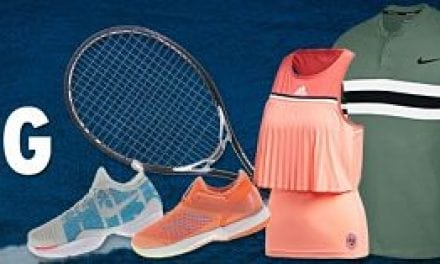What happened when Rafael Nadal hit three — and only three — balls in the court against Casper Ruud?
Calculated clay-court carnage.
Nadal defeated Ruud 6-3, 6-3, 6-0 in the Roland Garros final on Sunday on the back of dominating points in which he hit exactly three balls in the court when serving and receiving. In a one-sided final that saw the Spaniard win the final 11 games of the match, Nadal and Ruud surprisingly played very evenly in the 0-4 shot rally length, with Nadal winning 28 points and Ruud 27.
And then the fifth shot of the rally arrived, and it acted like a proverbial line in the Parisian clay.
Five-Shot Rallies (Nadal Serving)
Rally length in tennis is dictated by the ball landing in the court, not hitting the strings, which means the server can only win odd-numbered rallies, and the returner can only win even-numbered rallies. A five-shot rally is an ideal rally length for Nadal’s chess-like strategy, giving him two more strategic moves after the serve to either construct a winner or force an error. This is where his dominance in the final blossomed in all its glory.
Points Won In Five-Shot Rallies
Nadal = 11 points won (3 winners/8 errors extracted from Ruud)
Ruud = 3 points won (1 winner/2 errors extracted from Nadal)
Ruud won four-shot rallies 9-6, but things dramatically changed when one more shot was hit in the court. Nadal forged an impressive 11-3 advantage in five-shot rallies. Getting to hit two more shots after the serve is a sweet spot for Nadal to initially gain a positional advantage and then extract errors from his scrambling opponent.
Six-Shot Rallies (Nadal Receiving)
The returner is typically on defence to start the point in six-shot rallies, weathering the storm of an aggressive serve and then playing defence with a Return +1 groundstroke. Getting to neutral on the third shot is typically considered a minor victory for the returner. Those rules simply didn’t apply to Nadal in the final.
Points Won In Six-Shot Rallies
Nadal = 13 points (10 winners / 3 errors extracted from Ruud)
Ruud = 3 points (0 winners / 3 errors extracted from Nadal)
[NEWSLETTER FORM]
Nadal forged an eight-point advantage in five-shot rallies (11-3) and was even more dominant in six-shot rallies, creating a 10-point advantage (13-3). Of all the rally lengths played in the final, Nadal hit the most winners (10) in six-shot rallies. You can picture in your mind the Spaniard rolling back a high return from deep in the court, then moving quickly to the baseline to attack the next shot to Ruud’s backhand and then hitting a run-around forehand winner through the vacant deuce court, out of reach of Ruud’s running forehand.
Nadal forged a dominant 24-6 point advantage when you combine five and six-shot rallies. It is important to note that in both five and six-shot rallies, Nadal hits exactly three shots in the court.
What’s fascinating is that seven and eight-shot rallies had far less bearing on the outcome. Ruud won seven-shot rallies 5-4, and Nadal won eight shot rallies 6-3. There were a sizable 30 points played in five and six-shot rallies and just 18 points played in seven and eight-shot rallies.
Nadal’s Rally Advantage
0-4 Shot Rallies = 1-point advantage (28-27)
5-6 Shot Rallies = 18-point advantage (24-6)
7-8 Shot Rallies = 2-point advantage (10-8)
Hitting three balls in the court, whether serving or receiving, was the sweet spot of Nadal’s lopsided victory. He did well to survive the initial onslaught of the 0-4 rally length and then went straight to work hitting 13 winners and extracting 11 errors from his third shot of the rally.
Three shots in the court is an ideal strategic blend of defending first, outmaneuvering second, and dropping the hammer on the third shot. The Parisian mid-length master plan was hidden in plain sight.















